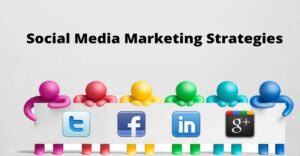In today’s digital age, the best social media campaigns play a pivotal role in shaping brand narratives and engaging audiences. Having analyzed numerous campaigns, I’ve discovered that the most successful ones demonstrate remarkable creativity and strategic execution. The stories behind the best social media campaigns are not only inspiring but also offer valuable lessons in connecting with audiences on a deeper level.
These campaigns excel at driving engagement while establishing a strong emotional connection with their audiences, making them both memorable and effective.

For instance, brands like Dove and Apple have successfully leveraged social media to amplify their messages. Meanwhile, others like Burger King have shown the power of humor and wit in their marketing strategies.
These examples showcase how innovative thinking and a deep understanding of target audiences can lead to remarkable campaign outcomes.
As I explore some of the leading campaigns, I will highlight what made them successful and the key lessons that can be drawn from their approaches.
These insights can serve as a guide for anyone looking to enhance their social media marketing efforts and achieve impactful results.
Table of Contents
The Rise of Social Media in Marketing
I have observed a significant transformation in how businesses approach marketing.
Social media platforms have become essential tools for brand visibility and engagement.
Over 4.9 billion people use social media globally. This vast audience presents an invaluable opportunity for marketers.
Targeting specific demographics is easier than ever with advanced analytics.
Many brands leverage innovative campaigns to capture attention.
For example, McDonald’s “As Featured In” campaign engaged fans by tapping into pop culture. It successfully resonated with a wide audience through nostalgia and interactive elements.
I notice that successful campaigns often focus on creating authentic connections.
Companies that effectively express their brand’s personality tend to achieve higher customer loyalty.
A recent article identified several exemplary campaigns for inspiration. These include creative storytelling, strategic partnerships, and user-generated content.
These elements drive engagement, making campaigns memorable.
The rise of mobile access enhances social media’s impact.
Users can engage with brands on-the-go, making timely content a priority for marketers.
In this digital landscape, social media marketing is vital.
Brands that adapt quickly to trends often outperform competitors. Understanding the effectiveness of past campaigns can shape future strategies and improve outcomes.
Elements of a Successful Social Media Campaign
Creating a successful social media campaign involves several key elements that I consider essential.
1. Clear Goals and Objectives
I define precise targets for my campaign, such as increasing brand awareness, driving website traffic, or boosting sales. This clarity guides all my decisions throughout the campaign.
2. Target Audience Identification
Knowing my specific demographic is crucial. I research and understand who my audience is to tailor my content effectively.
3. Compelling Content Strategy
Content is the backbone of any campaign. I focus on creating relevant and engaging content that resonates with my audience, utilizing formats like videos, images, and interactive posts.
4. Consistent Branding
I ensure that my messaging aligns with my brand’s voice and identity. Consistency fosters trust and recognition among my audience.
5. Engagement Tactics
Encouraging interaction is vital. I incorporate call-to-actions, polls, and questions to engage my audience and foster a sense of community.
6. Performance Metrics
Finally, I track my campaign’s performance using metrics like engagement rates, shares, and conversion rates. Analyzing these results helps me refine future campaigns.
By combining these elements, I can craft impactful social media campaigns that resonate with my audience and achieve my marketing objectives.
For inspiration, I explore successful examples from best social media campaigns.
Case Study Overview: Top Campaigns of the Last Year
In the last year, several social media campaigns stood out for their creativity and effectiveness. I analyzed these campaigns to highlight key strategies that drove their success.
1. Burger King’s Whopper Detour
This campaign utilized geolocation technology to attract customers. By offering discounts for ordering a Whopper near a McDonald’s, it boosted app downloads and sales significantly.
2. Dove’s Real Beauty Campaign
Dove continued its commitment to authentic beauty by featuring real women in their advertisements. This initiative resonated with audiences, promoting body positivity and brand loyalty.
3. Wendy’s Twitter Engagement
Wendy’s maintained its edgy, humorous presence on Twitter. The fast-food chain’s witty responses and playful banter with followers earned extensive engagement, making their social media interactions memorable.
4. Cadbury’s “Unity Bar”
Cadbury’s campaign focused on inclusivity by introducing the Unity Bar, which contained various chocolates. This initiative celebrated diversity and sparked conversations about unity, receiving positive responses across platforms.
5. Nike’s “You Can’t Stop Us”
Nike effectively used video storytelling to inspire during challenging times. The campaign celebrated resilience and sportsmanship, leading to increased engagement and reaffirming brand values.
These campaigns illustrate the diverse approaches brands can take to create impactful social media strategies. Each case offers valuable lessons in engaging audiences authentically.
Strategies for Engagement
Engagement is a pivotal aspect of social media campaigns. To create impactful connections with audiences, I focus on various strategies such as crafting creative content, leveraging user-generated contributions, partnering with influencers, and designing interactive campaigns.
Creative Content Creation
In crafting creative content, I prioritize originality and storytelling. Engaging visuals, compelling narratives, and relevant themes resonate with audiences. I often use high-quality images and videos to capture attention.
For instance, brands like LEGO have successfully created shareable content by aligning their campaigns with current events or cultural moments.
Incorporating humor or emotional appeals can enhance user connection, encouraging shares and comments.
Incorporating a consistent brand voice across all platforms helps in building familiarity. Using storytelling techniques not only draws people in but also makes them more likely to remember the brand.
User-Generated Content
User-generated content (UGC) is an excellent way to foster community and engagement.
I encourage followers to share their experiences with my brand. This not only boosts authentic interactions but also builds trust.
Campaigns like Coca-Cola’s “Share a Coke” effectively utilized UGC by inviting consumers to post photos with personalized bottles.
I understand that incentivizing sharing, such as through contests or features on brand pages, significantly increases participation.
UGC showcases the genuine opinions of customers, which can influence potential buyers positively. It’s a powerful method that leads to organic engagement and expands reach while promoting a sense of brand loyalty.
Influencer Partnerships
Partnering with influencers can greatly enhance engagement in my campaigns.
I select influencers whose values align with my brand for authenticity. When followers see someone they trust endorsing a product, they are more likely to engage.
For effective campaigns, I often collaborate closely with influencers to ensure they creatively integrate my product into their content. This often results in natural exposure leading to higher conversion rates.
Additionally, using micro-influencers can be cost-effective while still generating significant engagement. Their niche audiences often exhibit higher loyalty and are more likely to interact with branded content.
Interactive Campaigns
Creating interactive campaigns is another strategic approach I employ to enhance audience engagement.
These can range from polls and quizzes to contests and live Q&A sessions. Such interaction invites participation and makes followers feel valued.
Platforms like Instagram and Twitter offer features that facilitate these engagement strategies.
For example, I often use Instagram Stories to run quick polls, which not only engage users but also provide insights into their preferences.
Interactive content encourages users to express their opinions and share their experiences, creating a dynamic atmosphere. This method has proven effective in keeping the audience invested and excited about the brand, ultimately driving higher engagement rates.
Leveraging Different Social Media Platforms
In today’s digital landscape, effectively utilizing social media platforms is crucial for a successful campaign. Each platform offers unique features and audiences, which I must consider when crafting my strategy. Here’s a closer look at how to leverage these platforms effectively.
Choosing the Right Platform
Selecting the appropriate platform is fundamental. I assess my target audience to determine where they spend their time.
For example, Instagram is ideal for visually-driven content, while LinkedIn is better for B2B engagement.
I also consider platform demographics.
Facebook has a broad user base, making it suitable for diverse campaigns. Meanwhile, platforms like TikTok cater to younger audiences and focus on short, engaging videos.
To maximize impact, I often use analytics tools to gauge performance across platforms.
This data helps me refine my approach based on which platforms yield the best engagement rates.
Cross-Platform Campaign Integration
Integrating campaigns across multiple platforms enhances reach.
I develop a cohesive message tailored to each channel while maintaining brand consistency.
For instance, I might use Instagram Stories to tease a product launch and follow up with a detailed announcement on Facebook.
Using Hashtags effectively unifies my campaign across platforms, increasing visibility.
I also ensure that the visuals and tone align, creating a seamless consumer experience.
Utilizing cross-promotion helps to drive followers from one platform to another, boosting overall engagement.
I often incorporate links from my social media posts to my website, facilitating direct interactions with my brand.
Platform-Specific Tactics
Each social media platform has specific tactics that work best.
On Twitter, I focus on leveraging trending topics and participating in relevant conversations. Short, punchy tweets resonate well with users seeking quick updates.
On Pinterest, I create visually appealing pins that link back to my content, effectively driving traffic to my website. Engaging infographics perform particularly well here.
For TikTok, I develop entertaining challenges or behind-the-scenes content that encourages user participation.
I recognize that video content must be engaging within the first few seconds to capture attention.
Analytics and Measuring Success
To effectively evaluate the best social media campaigns, I focus on key performance metrics that reflect true impact.
Understanding these metrics allows me to make informed decisions and refine my strategies.
Some crucial metrics include:
- Engagement Rate: Measures likes, shares, and comments relative to total followers.
- Reach: The total number of unique users who see a post.
- Conversion Rate: Percentage of users who complete a desired action, such as signing up or making a purchase.
Utilizing analytics tools enhances my ability to gather this data efficiently.
Platforms like Sprout Social and Hootsuite can automate measurement processes.
I pay attention to results from various campaigns, allowing me to identify which strategies resonate with my audience.
This includes analyzing ad performance, influencer partnerships, and audience demographics.
Regularly reviewing this data ensures I remain agile and responsive.
It empowers me to optimize future campaigns based on real insights.
Most importantly, tracking metrics demonstrates the return on investment I achieve through my social media efforts.
By focusing on measurable outcomes, I can clearly see the effectiveness of my campaigns and make adjustments as needed.
The Power of Hashtags in Visibility
Hashtags play a crucial role in enhancing visibility on social media platforms. They allow users to categorize content and help others find posts related to specific topics.
When I create a hashtag campaign, I focus on relevance and simplicity.
Effective hashtags should be memorable and directly related to the campaign goal.
For example, campaigns like Lay’s #DoUsAFlavor show how a clear and engaging hashtag can drive participation and brand awareness.
Incorporating hashtags into posts increases their discoverability.
Posts with at least one hashtag receive 12.6% more engagement than those without. This statistic highlights how hashtags can elevate content in crowded feeds.
I also appreciate how hashtags facilitate community building.
They encourage conversations around a shared theme, allowing brands to connect with their audience.
Successful campaigns often leverage trending hashtags to join ongoing conversations and reach a broader audience.
Using analytics tools can help in tracking the performance of campaigns.
I often analyze which hashtags generate the most engagement, allowing me to refine future strategies.
Strategic use of hashtags not only boosts visibility but also fosters engagement and interaction.
Campaigns that effectively harness the power of hashtags often see significant growth in their online presence.
Crisis Management in Social Media Campaigns
In social media campaigns, crisis management is essential for protecting brand reputation. Issues can arise quickly, from negative comments to misinformation. A timely response can mitigate damage.
I prioritize preparation by developing a comprehensive crisis management plan. This includes:
- Establishing Guidelines: Clear rules on how to respond during a crisis.
- Designating a Team: A dedicated team to handle communication and monitor social media.
- Using Tools: Implementing social listening tools to identify potential issues early.
During a crisis, my approach involves swift communication.
I address concerns directly and transparently:
- Acknowledge the Issue: Recognizing the problem signals that I am aware and taking it seriously.
- Provide Updates: Regular communication keeps stakeholders informed about steps being taken.
- Engage With Users: Responding to comments and questions helps maintain trust.
I also stress the importance of analyzing past campaigns.
Evaluating crises from previous initiatives provides valuable insights into what can be improved for future efforts. Being proactive rather than reactive can significantly enhance outcomes.
Effective crisis management can even turn challenges into opportunities, showcasing a brand’s resilience. Handling crises well can elevate a brand’s image in the eyes of its audience.
Future Trends in Social Media Marketing
As I look ahead, several trends are shaping the landscape of social media marketing.
Brands will need to adapt to these to ensure their strategies remain effective.
1. Increased Use of AI
Artificial intelligence is becoming integral in social media strategies. It aids in personalizing content and improving customer interactions.
2. Video Content Domination
Platforms like Instagram and TikTok emphasize video content. I see brands needing to create engaging and shareable videos to connect with audiences.
3. Social Commerce Integration
Shopping directly through social media is on the rise. I expect brands to enhance their efforts in seamless shopping experiences while maintaining user engagement.
4. Authenticity and Transparency
Consumers value genuine connections. Brands that showcase real stories and behind-the-scenes content often build stronger relationships with their audiences.
5. Focus on Community Building
Creating a sense of community will be essential. I notice brands fostering spaces for dialogue and interaction can lead to deeper customer loyalty.
6. Sustainability and Social Responsibility
There is a growing expectation for brands to operate ethically. I recognize that those demonstrating commitment to sustainability can enhance brand perception.
By keeping these trends in mind, I can position my campaigns to resonate with evolving consumer expectations and behaviors.
The future of social media marketing looks dynamic, and staying informed is key.
Budgeting for Social Media Campaigns
When planning a successful social media campaign, I find that effective budgeting plays a critical role. It helps ensure that resources are allocated wisely for maximum impact.
Here, I will discuss cost-effective strategies and how to allocate budget specifically for advertising.
Cost-Effective Strategies
Engaging in social media campaigns doesn’t always require a large budget.
One strategy I employ is to utilize free tools and platforms for scheduling and managing posts. For instance, I often use free scheduling options available on platforms like LinkedIn.
Additionally, I focus on creating high-quality, engaging content rather than relying solely on paid promotions.
This can include visually appealing graphics and compelling storytelling. Collaborating with micro-influencers can also be a cost-effective way to reach targeted audiences without the high costs associated with larger influencers.
Lastly, I often analyze the performance of previous campaigns to identify what works best.
This allows me to invest in elements that demonstrate higher returns, making the most of my budget.
Allocating Budget for Advertising
Allocating a budget for advertising requires careful consideration of each platform’s unique features.
I typically assign a larger portion of my budget to platforms that have shown the highest ROI in past campaigns.
For example, I find that Instagram ads yield better engagement for visual products, while Facebook is effective for broader reach.
I recommend breaking down the budget into specific categories:
- Content Creation: Allocate funds for quality images, videos, and copywriting.
- Ad Spend: Determine what percentage of the budget will go toward paid ads on each platform.
- Tools and Software: Include costs for any tools that enhance analytics and scheduling.
By prioritizing these categories, I ensure that my advertising expenditure supports strategic objectives and maximizes the impact of my social media campaigns.
Legal Considerations in Social Media Campaigns

Navigating the legal landscape of social media campaigns is essential for success.
I must consider several key points to ensure compliance.
1. Intellectual Property Rights
I need to respect copyrights and trademarks.
Using images, music, or content without permission can lead to legal trouble.
2. Advertising Standards
It’s important to adhere to advertising guidelines established by organizations such as the Federal Trade Commission (FTC).
Clear disclosures are necessary when promoting products.
3. User-Generated Content
When running campaigns that encourage user submissions, I should obtain consent and clarify how I will use the content.
This can help avoid disputes later.
4. Privacy Laws
With stringent privacy regulations, I must be cautious about collecting user data.
Compliance with laws like GDPR is crucial when targeting audiences.
5. Contest and Sweepstakes Regulations
If I plan to host contests, I must follow the appropriate laws.
This includes clearly outlining rules and eligibility criteria to avoid potential legal pitfalls.
By being proactive and informed, I can minimize risks and enhance the effectiveness of my social media campaigns.
Staying updated on legal developments helps me maintain compliance in a rapidly changing environment.
For more detailed information, I recommend checking out resources on legal implications in social media marketing.



